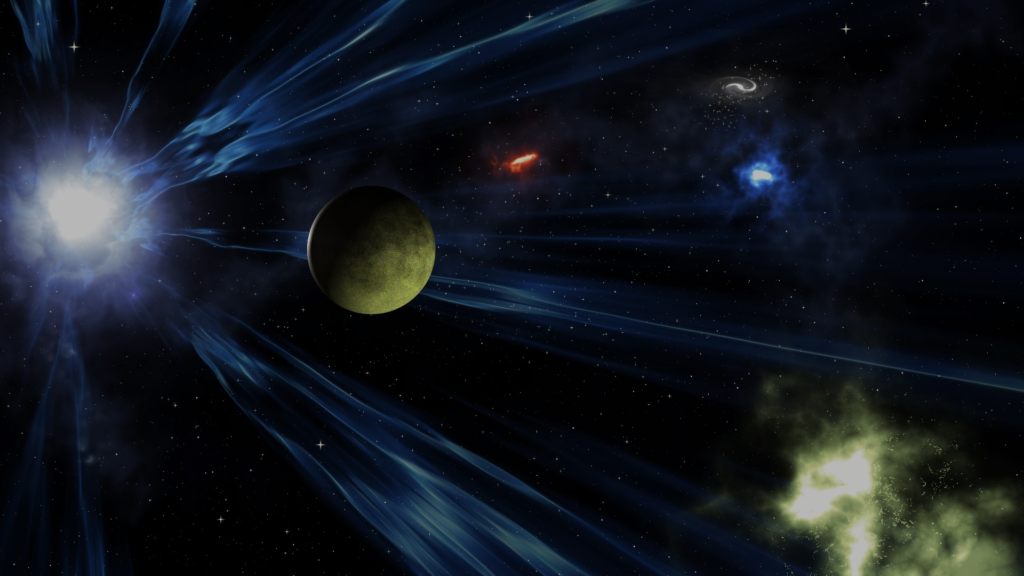Unlocking the Secrets of Black Holes: Cosmic Vacuum Cleaners of the Universe
Have you ever imagined a place where gravity is so strong that nothing, not even light, can escape? That’s the mind-bending reality of a black hole, a cosmic enigma that continues to fascinate scientists and stargazers alike. These enigmatic objects aren’t just theoretical constructs; they’re real, powerful entities shaping the very fabric of our universe. Let’s dive into the captivating mysteries surrounding these cosmic vacuum cleaners.
1. The Birth of a Black Hole: A Stellar Demise
Black holes aren’t born from nothing; they’re the spectacular remnants of massive stars. Imagine a star many times larger than our Sun, burning furiously through its nuclear fuel. When this fuel runs out, the star’s core collapses under its own immense gravity. This collapse is so violent that it triggers a supernova, a colossal explosion that briefly outshines entire galaxies! If the remaining core is sufficiently massive (at least three times the mass of our Sun), the gravity becomes so intense that it crushes the core into an infinitesimally small point called a singularity. This singularity is surrounded by an event horizon, the “point of no return,” beyond which nothing can escape, not even light. Think of it like a one-way street into a cosmic abyss.
2. The Gravity Game: How Black Holes Warp Spacetime
Black holes exert their influence through gravity. Their gravitational pull is so immense that it warps the very fabric of spacetime, the four-dimensional structure that encompasses everything in our universe (three spatial dimensions and time). Imagine a bowling ball placed on a stretched rubber sheet; the ball creates a dip, causing objects rolling nearby to curve towards it. Black holes do something similar, but on a cosmic scale. This warping of spacetime is what causes the bending of light near black holes, a phenomenon that astronomers can observe.
3. Types of Black Holes: Stellar and Supermassive
Not all black holes are created equal. The ones formed from the collapse of massive stars are called stellar-mass black holes. These are relatively “small,” ranging from a few to tens of times the mass of our Sun. Then we have supermassive black holes, absolute behemoths residing at the centers of most galaxies, including our own Milky Way. These monsters can have masses millions or even billions of times that of our Sun! The exact mechanism of their formation is still a topic of active research, but it likely involves the merging of many smaller black holes over billions of years.
4. Observing the Unobservable: Indirect Detection Methods
Since we can’t directly see black holes (because light can’t escape), we rely on indirect observation methods. One crucial way is by observing the effects of their gravity on nearby stars and gas. Astronomers look for stars orbiting invisible, extremely massive objects – a telltale sign of a black hole. Another method involves detecting the powerful X-rays emitted as matter spirals into a black hole, heating up to incredibly high temperatures before crossing the event horizon. This process, known as accretion, produces a bright, luminous disk of hot gas around the black hole.
5. Black Holes: Destroyers and Creators
While black holes have a reputation as cosmic destroyers, they also play a vital role in galactic evolution. The gravitational influence of supermassive black holes at the center of galaxies helps regulate the rate of star formation. Moreover, the powerful jets of particles ejected from black holes can influence the formation of galaxies and even trigger the birth of new stars in some cases.
In Conclusion:
Black holes, once considered purely theoretical objects, are now recognized as fundamental components of our universe. Their existence challenges our understanding of gravity, space, and time, pushing the boundaries of our scientific knowledge. From their formation to their influence on galactic evolution, black holes continue to fascinate and inspire, urging us to explore further into the vast cosmic mysteries that surround us. What are your thoughts on these enigmatic cosmic objects? Share your comments below!


